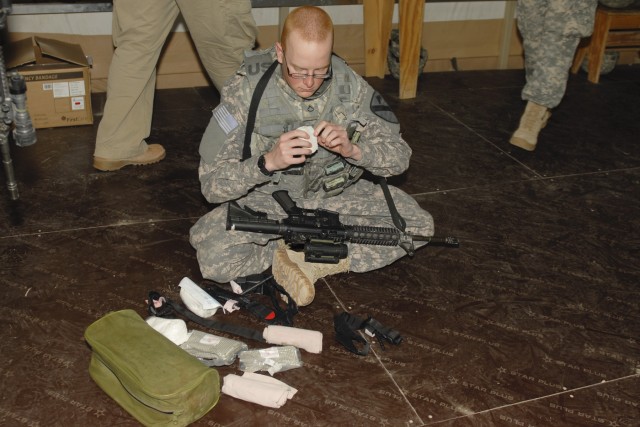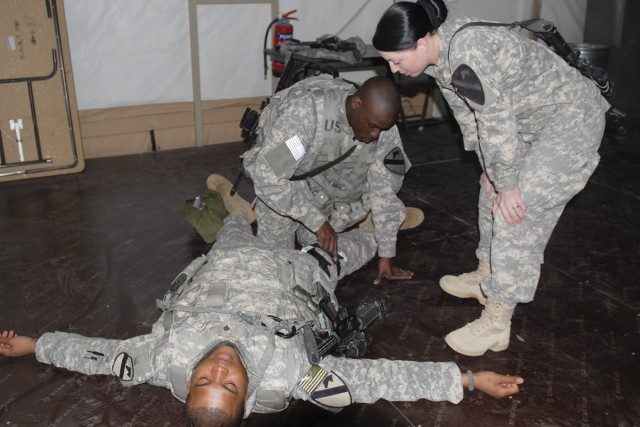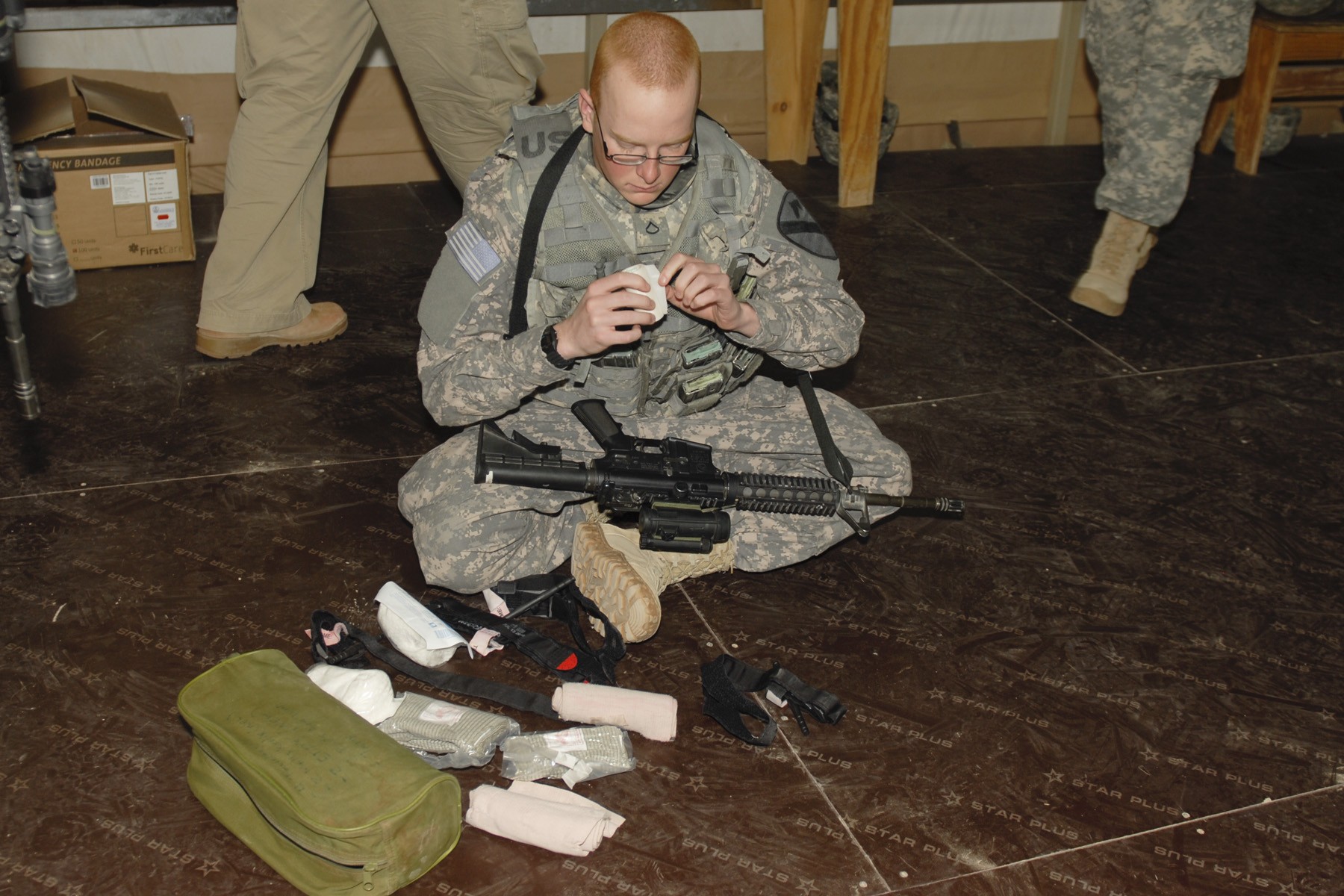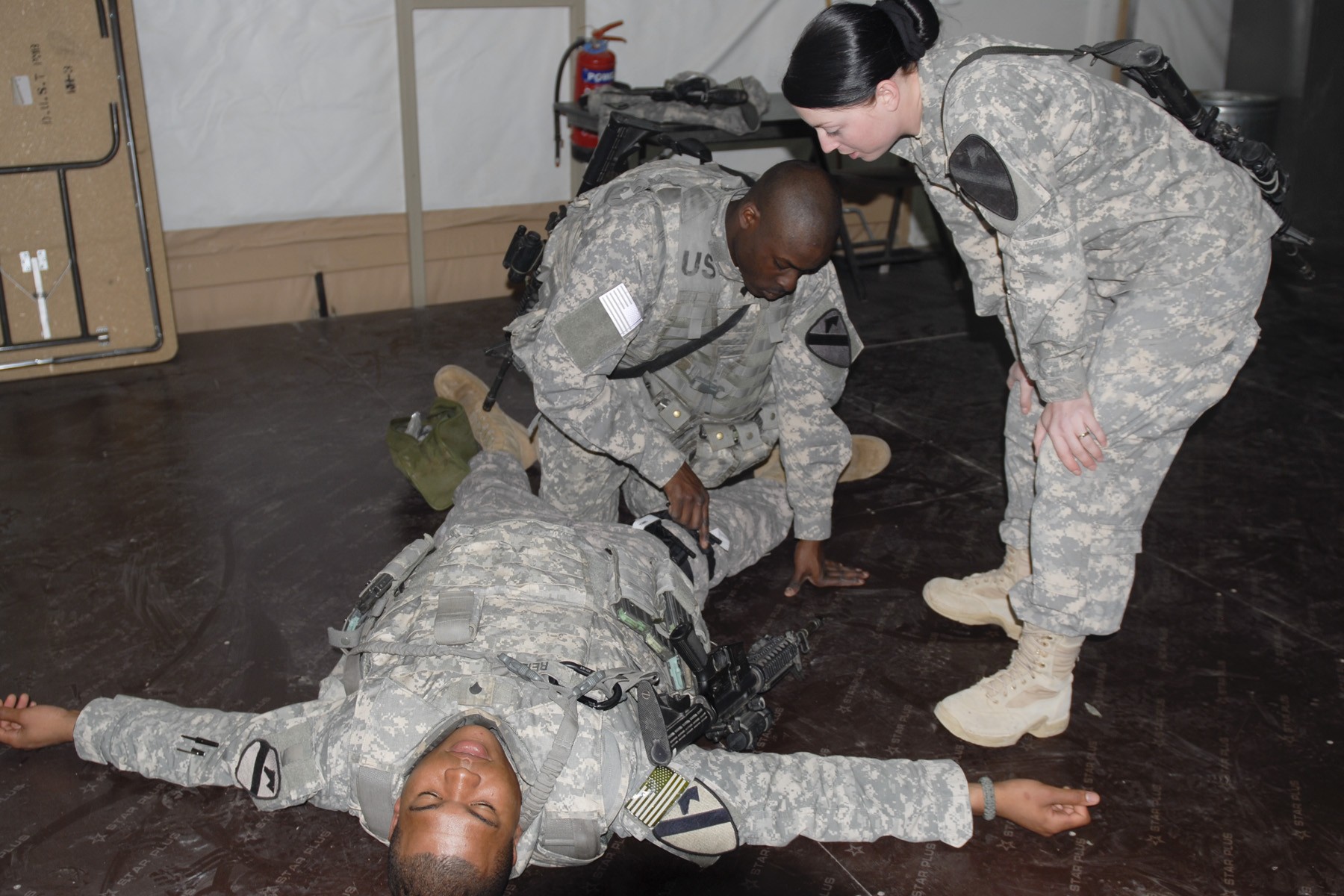CAMP BUEHRING, Kuwait - The personal security detachment (PSD) for Headquarters and Headquarters Troop, 3rd Advise and Assist Brigade, 1st Cavalry Division conducted medical-simulation training, here, at Camp Buehring, Kuwait Feb. 12.
The four hours course consisted of an hour of classroom training followed by a practical exercise where Soldiers practiced first aid on one another, and finally moved on to life-like simulators.
Troops spent their time in the classroom going over how to conduct combat care and how to treat injuries like amputation, massive bleeding and collapsed lungs.
After learning how to apply care under fire, Soldiers practiced tasks they had learned in the classroom such as using pressure points to slow blood flow while applying tourniquets and bandages to each other.
"It was good to practice on each other before going to the next classroom. It was a refresher on what we learned previously and gave us time to learn from our mistakes," said Pvt. Jared Heath.
For the last part of training, Soldiers paired up and entered a dark room with strobe lights. Upon entering the room, Soldiers discovered mannequins lying on the floor. These simulated casualties were missing limbs and bleeding, but still breathing. The troopers had to provide initial treatment and then medics followed to provide triage while loud noises of gunfire and screaming played in the background.
"It was scary at first to come in and see the bodies and to have to work on someone by myself, but I feel confident I could do it if I need to now," said Pvt. Darrin Batson.
Training like this is important because it allows Soldiers to conduct practical exercises that test medical proficiency before they go into combat.
"Every Soldier should receive combat lifesaver training and the (life-like) simulators help the Soldiers get past shock and better equip them for real life scenarios," said Sgt. Scott McCulloch.






Social Sharing